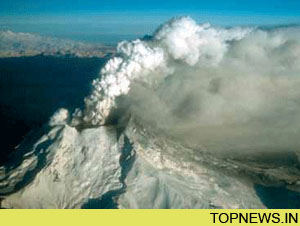Redoubt Volcano in Alaska roars into activity, more eruptions to follow
 Washington, March 24 : Redoubt Volcano in Alaska, has roared into activity overnight with a series of eruptions that blew ash as high as 9.5 miles (15 kilometers) into the sky, with scientists saying that more such explosions are due.
Washington, March 24 : Redoubt Volcano in Alaska, has roared into activity overnight with a series of eruptions that blew ash as high as 9.5 miles (15 kilometers) into the sky, with scientists saying that more such explosions are due.
According to a report in National Geographic News, the Redoubt Volcano eruption has already sparked earthquake swarms and mudflows, and more are expected-along with perhaps a new lava dome.
The eruption could continue for days, weeks, or possibly months, said Tina Neal, a volcanologist at the Alaska Volcano Observatory in Anchorage, which monitors the 10,200-foot (3,100-meter) volcano.
.
Located about 100 miles (160 kilometers) southwest of Anchorage, Redoubt Volcano sent ash drifting north of the city.
Anchorage itself seems to have been spared so far, thanks to the current wind pattern.
Small Alaska towns as far as 150 miles (240 kilometers) north of Anchorage have seen abrasive volcanic dust, and area airplanes have been grounded, according to Neal.
"We had at least five (eruptions) that lasted ten to twenty minutes each," she said.
Nobody knows what the Alaska volcano will do next, but Redoubt continues to be very restless, producing swarms of small earthquakes, Neal said.
"If the eruption proceeds according to form, the next step might be the formation of a lava dome," she added.
When Redoubt Volcano last erupted, in 1989-90, a series of such domes formed, each collapsing as it grew too large to support itself.
"But, we have no evidence of a lava dome yet," Neal said.
There is little chance that the volcano might produce a devastating explosion like Washington State's 1980 Mount St. Helens eruption, she added.
More likely is that hot ash falling on snow will produce mudflows.
Mud, in fact, has already been seen at the mouth of the Drift River, which drains the north side of the glacier-capped mountain into Cook Inlet.
Whatever happens, the eruptions will be learning experiences, thanks to the volcano observatory's constant monitoring.
"When the dust settles, literally, we will have a lot of data to pore through," Neal said. (ANI)